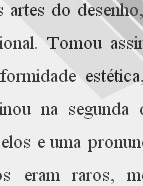

................................
Clearly, Raczynski's work benefitted from support. He himself referred to the contributions received from the Visconde de Juromenha [Viscount of Juromenha], who collected for him "Notices sur quelques artistes portugais, peintres, architects, sculpteurs, etc.", from Vasco Pinto de Balsemão, a librarian who provided him with a large number of documents and a list of paintings attributed to Grão Vasco, and, among many others, from Francisco de Assis Rodrigues, director of the Academia das Belas-Artes [Fine Arts Academy]. But it was Raczynski who was the driving force behind this activity, its organiser, and the author who was best suited to organise sparse and often mythologised references. José-Augusto França (A Arte em Portugal no Século XIX , vol. I, pp. 393 et seq.) considered his volumes the "first modern work of historical criticism", which “dropped a bombshell on Portuguese circles, in its publication of neglected documents, showing errors, insufficiencies, and the pretensions of researchers, artists, and collectors.” His "lesson in quality", given "at both the level of contemporary creation and historical research", did not bear fruit immediately. It may be said that this only occurred in the 1870s, with Joaquim de Vasconcelos. However, all the scholars leaned on his work and paid him homage, even when they disagreed with his ideas.
In the following twenty-five years, art historiography continued to be carried out by dilettantes, some of undeniable merit, spurred on by some foreigner or other. Certain features denoted an imminent change: the interest in monuments grew, as did the number of authors and specialised journals.
While the definition of a "Manueline style" followed its path, most of the attention was geared towards the mythical figure of Grão Vasco. It was on this painter that J. C. Robinson, consultant to the South Kensington Museum, wrote an article in a London journal, which José-Augusto França described as "a new example of professional work" (op. cit., p. 396), although elsewhere he reduced Robinson to the status of a "modest British historian" (in Ler História [Reading History], no. 34, 1998, p. 9). After collaborating with Raczynski, the Segundo Visconte de Juromenha [Second Viscount of Juromenha], João António de Lemos Pereira de Lacerda (Lisbon, 1807 - Lisbon, 1887), who studied Mathematics and Philosophy at the Universidade de Coimbra, devoted himself to the study of Camões. In the field of art history, he limited himself to writing only a few articles. In 1877, he published a text on Grão Vasco in the Revista Crítica de Belas-Artes [Fine Arts Criticism Journal], deemed by Joaquim de Vasconcelos as an "interesting and useful study for the history of the root of the problem" constituted by this artist and the "school" of painting around him. Francisco de Sousa Holstein (Paris, 1838 - Carnide, 1878), Marquês de Sousa Holstein [marquis of Sousa Holstein], son of the Primeiro Duque de Palmela [First Duke of Palmela], with a doctorate in law, who was a member of parliament, peer of the kingdom, and inspector of the Academia de Belas-Artes, wrote the brochure for the Academis's painting gallery and collaborated in several journals.
